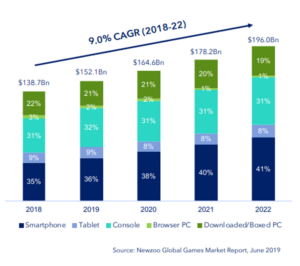Ask Yourself: In What Year Would You Have Hopped Off the Warren Buffett Compounding Train?
Warren Buffett’s annual letter to Berkshire Hathaway shareholders was released today. It starts – as always – with the table comparing the annual percentage change in Berkshire Hathaway with the annual percentage change in the S&P 500 with dividends included. Long time readers of the Buffett letter will remember when the change in book value of Berkshire Hathaway was included. That’s been removed. We are left with the change in per-share market value of Berkshire Hathaway.
Today, I’m just going to focus on this table. Over the next few days, I’ll talk about a few different parts of Buffett’s letter I found interesting. But, one of the most interesting pages in the letter is the very first one. The one with the table showing Berkshire’s performance vs. the S&P 500.
What’s notable about this table? One, Berkshire has outperformed the S&P 500 by about 10% a year over more than 50 years (1965-2019). Berkshire has compounded its market value at about 20% a year while the S&P 500 has done 10% a year. What’s also notable is the many very big years for Berkshire as a stock. On my print out of the letter, I circled some years that stood out to me. Basically, I just assumed that it’s incredibly rare for the S&P 500 to ever have a return of around 50% a year. Generally, an amazing year for the S&P 50 would be one like what we saw last year (up something over 30%). If you are completely in the S&P 500 index, your portfolio is not going to have up years of 40%, 60%, or 120%. Berkshire’s stock price sometimes does go up that much. Or, rather – it sometimes did. It hasn’t lately.
Berkshire had amazing up years – as a stock, these don’t necessarily match up with business results – two times in the 1960s, three times in the 1970s, three times in the 1980s, twice in the 1990s and then never again since the late 1990s. Berkshire’s stock has gone over 20 years with no what I’d call amazing up years. Any good year Berkshire has had as a stock in the last 20 years has been the kind of up year an index like the S&P 500 is also capable of. This obviously tamps down on Berkshire’s long-term performance potential. Most stocks that have amazing long-term compounding records will achieve those records with a bunch of short-term upward spurts in their stock price like Berkshire had in the 1970s, 1980s, and 1990s. In the last 20 years, Berkshire has had several years where returns were in the 22-33% range. Those are great years. But, they are years the S&P 500 is also capable of having (it was up 32% last year). The disappearance of these very big up years – the “lumpy” outperformance – in Berkshire as a stock explains a lot of why the stock performed so well versus the S&P 500 for its first 30 years under Buffett and so much …
Read more
